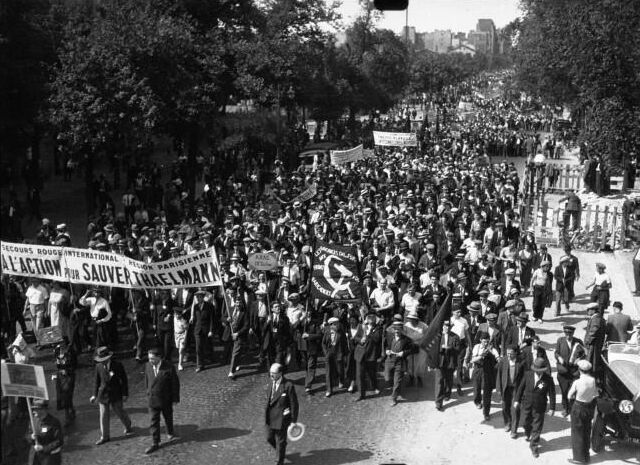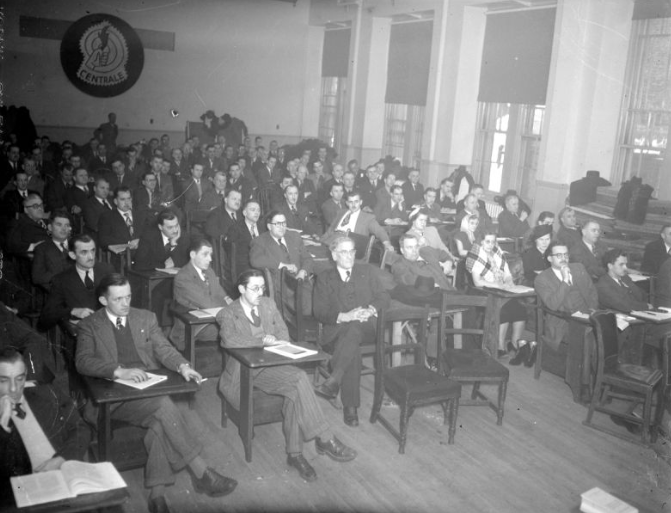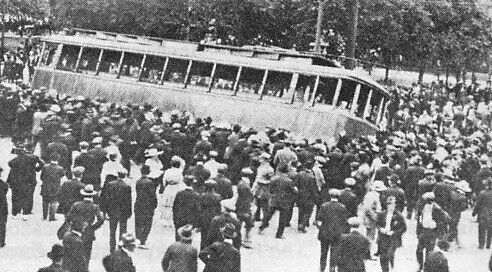Early 20th century was a very difficult time for Canadian workers. Indeed, industrialization and the rapid growth of the economy subjected workers to harsh working and living conditions in order to respect the rhythm of production of the companies.
To protect themselves and to force change, workers needed to come together to speak with one voice. Canada experienced an important trade union movement at the beginning of the 20th century, a determining movement for workers' rights.

The trade union movement was also present in other countries while they were experiencing an intense period of industrialization. In the United States, unions were becoming increasingly important as they recruited more workers, joining with Canadian workers as part of the Knights of Labor and the American Federation of Labor organizations.

Unhappy that Quebec workers were joining non-religious American unions, the clergy wanted to maintain its influence over the population of Quebec. The Church then decided to get involved with the workers’ movement.
In 1921, the clergy created the Confederation of Catholic Workers of Canada (CTCC), an organization bringing together several Catholic unions both in Quebec and Canada. Despite this, they had difficulty recruiting workers. Indeed, the CTCC was closer to the bosses and owners than to the workers.

During the years following the end of the First World War, demonstrations and strikes broke out across the country to put pressure on governments and employers. The government authorities were not sympathetic and called in the police and the army to repress the strikers.

Few laws existed to protect workers in the early 20th century. Faced with this reality, the trade union movement became more and more insistent as the workers were demanding better wages, a reduction in the number of hours worked and better safety in their workplace.
Conversely, the business bourgeoisie, which was very influential, pressured the government to keep the laws that were already in their favour. The bourgeoisie business owners were largely factory owners and were opposed to laws aimed at improving the conditions of workers since this would reduce their profits.
Despite the pressure exerted by the business bourgeoisie, the Quebec government began passing laws to improve working conditions. In 1924, the government officially recognized unions.
|
Laws adopted by the Quebec government at the beginning of the 20th century |
||
|---|---|---|
|
Date |
Law |
Change |
| 1901 | The Labour Disputes Act | It proposed conciliation services between the unions and bosses. |
| 1907 | The Industrial Establishments Act | It raised the minimum age to work in factories to 14 years. |
| 1909 | The Workmen's Compensation Act | It offered compensation to workers injured on the job. |
| 1910 | Law on the Establishment of Employment Offices for Workers | It provided placement offices for workers to support them in their job search. |